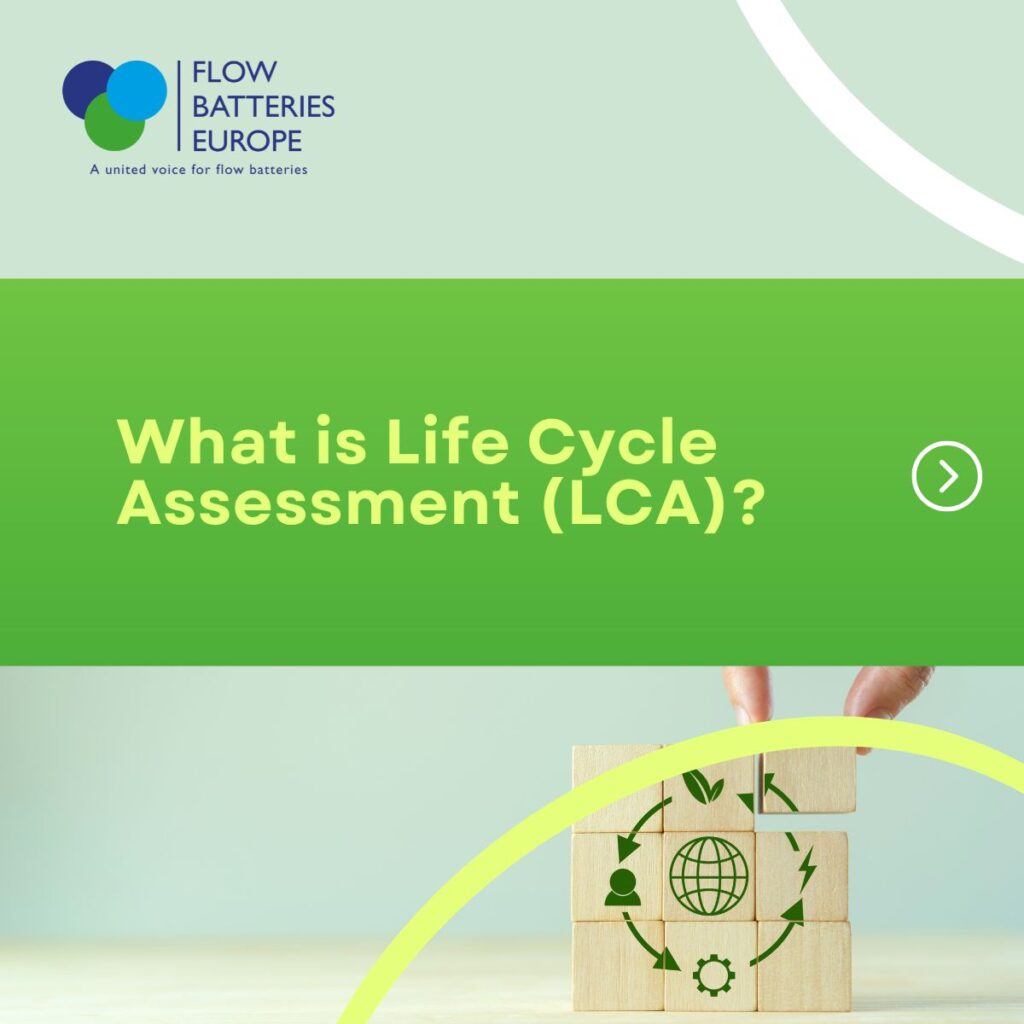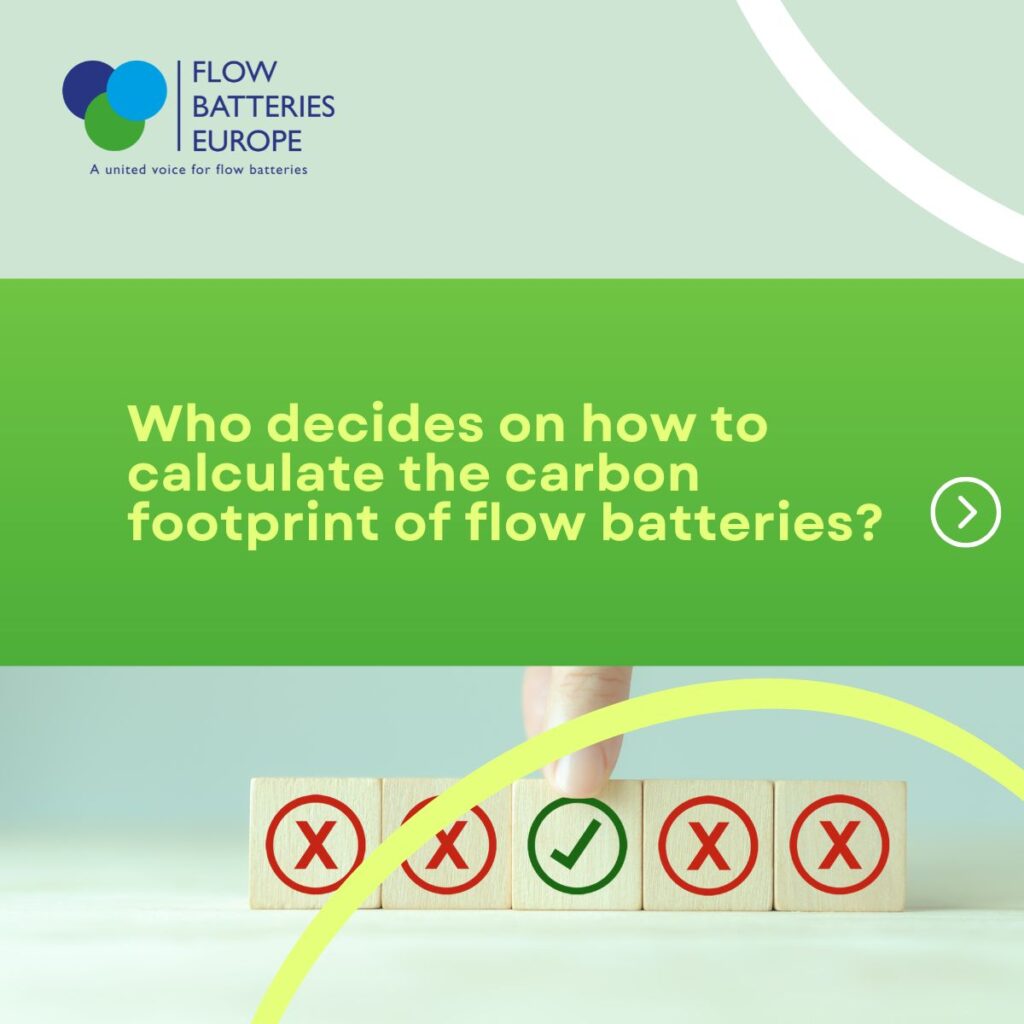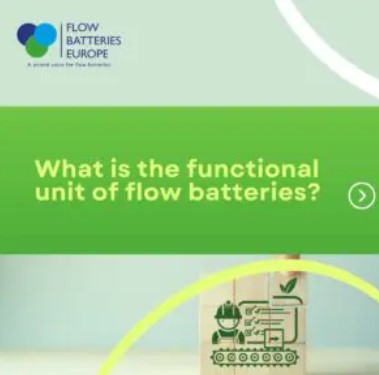Understanding Carbon Footprint
Are you familiar with Life Cycle Assessment (LCA) methods to determine the carbon footprint of your flow battery?
LCA studies are valuable tools for evaluating the environmental impact of products and technologies, identifying improvement opportunities to benefit the planet. LCA involves an in-depth analysis of a product’s potential environmental impacts throughout its life cycle.
Although LCA is standardised by ISO 14040:2006/14044:2006 and widely applied to batteries, closer examination reveals significant differences in conducting LCA studies. These differences are also reflected in the overall results, often making comparisons impossible. This can lead to incompatible schemes and divergent claims.
How does the Product Environmental Footprint (PEF) methodology work?
The PEF methodology is an important initiative from the European Commission, which offers an improved method for companies to calculate the environmental performance of any product throughout its life cycle.
The PEF is based on the scientific method called Life Cycle Assessments (LCA). However, it has been enhanced by:
- Narrowing down the LCA method, defining the scope and functional units for comparisons within product categories.
- Requiring common PEF-compliant background data.
- Prescribing impact methods instead of allowing free choice among 10-20 impact indicators.
- Providing weighting factors to calculate a single score. Enhancing reliability with minimal reviewer qualifications.
Furthermore, leaders from various industries have developed PEF Category Rules (PEFCR), facilitating comparisons between products within the same category and ensuring the validity of any claims made. Up to now, companies have voluntarily conducted LCAs, PEFs, or PEFCRs, while the European Commission has been exploring the establishment of a mandatory scheme for environmental claims.
EU’s Batteries Regulation – a legal act to impose the obligation of PEF calculation
The EU’s Batteries Regulation is the first legal act to impose the obligation of Product Environmental Footprint (PEF) calculation.
As the Battery Regulation takes a full life cycle approach, a central part of the legislation is that battery producers, importers, and distributors along the EU supply chain have to report on their batteries’ carbon footprint (CFB). Carbon Footprint Declaration should include information related to the manufacturer, the battery model, and the CFB.
The CFB must consider the raw material acquisition and pre-processing, main product production, distribution, and end-of-life and recycling. The use-phase is therefore not taken into account when calculating the carbon footprint. For the flow battery industry, the carbon footprint declaration applies as of August 2030.
Additionally, batteries shall have a clear and visible label indicating their carbon footprint as well as their carbon footprint performance class, following thresholds defined by the European Commission. Learn more here.
Who decides on how to calculate the carbon footprint of flow batteries?
As flow batteries must declare their carbon footprint from 2030 onwards, the industry will need to follow PEF rules established by the European Commission. The Commission’s Joint Research Centre (JRC) has been leading the technical and scientific development of the PEF methods.
However, flow battery stakeholders play a crucial role in PEF rules development. Their involvement is pivotal as they need to:
- Reach an industry consensus on steps and aspects of the PEF calculation methodology;
- Tailor the methodology to diverse flow battery types – different chemistries;
- Test new rules and identify inconsistencies;
- Provide the JRC with the necessary expertise and insights to shape PEF rules for flow batteries.
What is the functional unit of a flow battery?
A functional unit generally defines these questions related to a certain product:
- What: Function
- How much: Unit & Magnitude
- How long: Duration
- How well: Level of quality
The European Commission’s Joint Research Centre (JRC) is currently developing rules for the carbon footprint calculation for industrial batteries (except for batteries with external storage).
For rechargeable industrial batteries, the JRC considers two different services: for repetitive energy supply (REP) under frequent cycling behaviour or for on-demand services (OND) under sporadic discharge in case of power failure or blackouts. The JRC defines the functional unit for REP batteries as 1 kWh of total energy delivered until 80% initial capacity, and for OND batteries as 1kWmin of backup power capability until end-of-life.
However, for flow batteries a range of other parameters should be considered in the calculation, such as the reuse rate of electrolytes, recyclability of components, generated heat, battery lifetime, round-trip efficiency, degradation curve, or depth of discharge.
Click the below visuals to learn more about each topic








